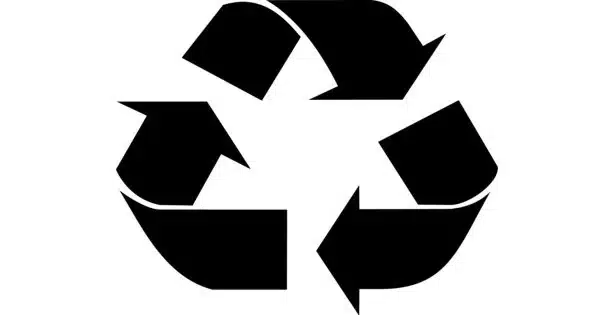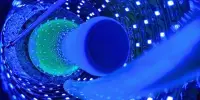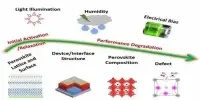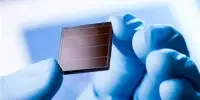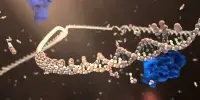Electrochemical recycling, also known as “electrolysis,” is a method of breaking down materials such as plastics into their constituent components using an electric current. The idea behind using electricity to recycle plastic is to depolymerize the plastic molecules into their original monomers, which can then be used to create new plastic products without lowering the quality of the material.
Every year, Americans generate millions of tonnes of plastic waste, the majority of which ends up in landfills. Chemists’ new research takes a first step towards making all that garbage disappear.
Chemists at the University of Colorado Boulder have created a new method for recycling a type of plastic commonly found in soda bottles and other packaging. The team’s method is based on electricity and some clever chemical reactions, and it’s simple enough that you can watch the plastic disintegrate right before your eyes.
The researchers published their new approach to chemical recycling in the journal Chem Catalysis. The study addresses the growing global problem of plastic trash. In 2018, the United States alone produced nearly 36 million tonnes of plastic products, according to the Environmental Protection Agency. According to study co-author Oana Luca, the majority of waste ends up in landfills.
It was awesome to actually observe the reaction progress in real time. The solution first turns a deep pink color, then becomes clear as the polymer breaks apart.
Dr. Pham
“We pat ourselves on the back when we toss something into the recycling bin, but most of that recyclable plastic never winds up being recycled,” said Luca, assistant professor in the Department of Chemistry. “We wanted to find out how we could recover molecular materials, the building blocks of plastics so that we can use them again.”
In the new research, she and her colleagues got one step closer to doing just that.
The group concentrated on a type of plastic known as polyethylene terephthalate (PET), which is found in water bottles, blister packs, and even some polyester fabrics. In small-scale lab experiments, the researchers mixed bits of that plastic with a specific type of molecule before applying a low electric voltage. The PET began to disintegrate within minutes.
Before its recycling tool can take a realistic bite out of the world’s plastic trash problem, the team has a lot more work to do. But it was still exciting to see the waste, which can linger in garbage piles for centuries, vanish in a matter of hours or days, according to study lead author Phuc Pham.
“It was awesome to actually observe the reaction progress in real-time,” said Pham, a doctoral student in chemistry. “The solution first turns a deep pink color, then becomes clear as the polymer breaks apart.”
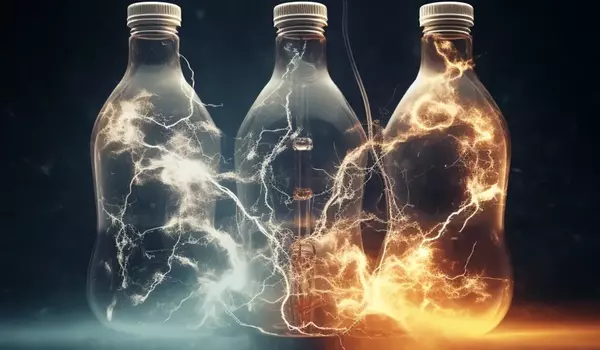
One person’s trash
According to Luca, it’s a completely new way of thinking about the possibilities of trash. Recycling bins, she observed, appear to be a viable solution to the world’s plastics problem. However, most municipalities around the world have struggled to collect and sort the small mountain of garbage that people generate on a daily basis. As a result, less than one-third of all PET plastic in the United States is recyclable (other types of plastic lag even further behind). Even so, methods such as melting plastic waste or dissolving it in acid can alter the material properties.
“You end up changing the materials mechanically,” Luca said. “Using current methods of recycling, if you melt a plastic bottle, you can produce, for example, one of those disposable plastic bags that we now have to pay money for at the grocery store.”
She and her team, in contrast, want to find a way to use the basic ingredients from old plastic bottles to make new plastic bottles. It’s like smashing your Lego castle so that you can retrieve the blocks to create a whole new building.
Another’s treasure
To accomplish this feat, the group used a technique known as electrolysis, which involves using electricity to break apart molecules. Chemists, for example, have long known that they can split water molecules into hydrogen and oxygen gas by applying a voltage to beakers filled with water and salts.
But PET plastic is a lot harder to divide than water. In the new study, Pham ground up plastic bottles then mixed the powder into a solution. Next, he and his colleagues added an extra ingredient, a molecule known as [N-DMBI]+ salt, to the solution. Pham explained that in the presence of electricity, this molecule forms a “reactive mediator” that can donate its extra electron to the PET, causing the grains of plastic to come undone. Think of it like the chemistry equivalent of delivering a karate chop to a wooden board.
The researchers are still trying to figure out how these reactions happen, but they were able to disassemble the PET into its basic building blocks, which they could then recover and potentially use to create something new. The researchers reported that using only tabletop equipment in their lab, they were able to break down about 40 milligrammes (a small pinch) of PET over several hours.
“While this is a great start, we believe that much more work needs to be done to optimise and scale up the process so that it can eventually be applied on an industrial scale,” Pham said.
At the very least, Luca has some big-picture ideas for the technology.
“If I had my way as a mad scientist,” Luca said, “I would use these electrochemical methods to break down many different types of plastic at once.” “That way, you could, for example, go to these massive garbage patches in the ocean, pull all of that waste into a reactor, and get a lot of useful molecules back.”
